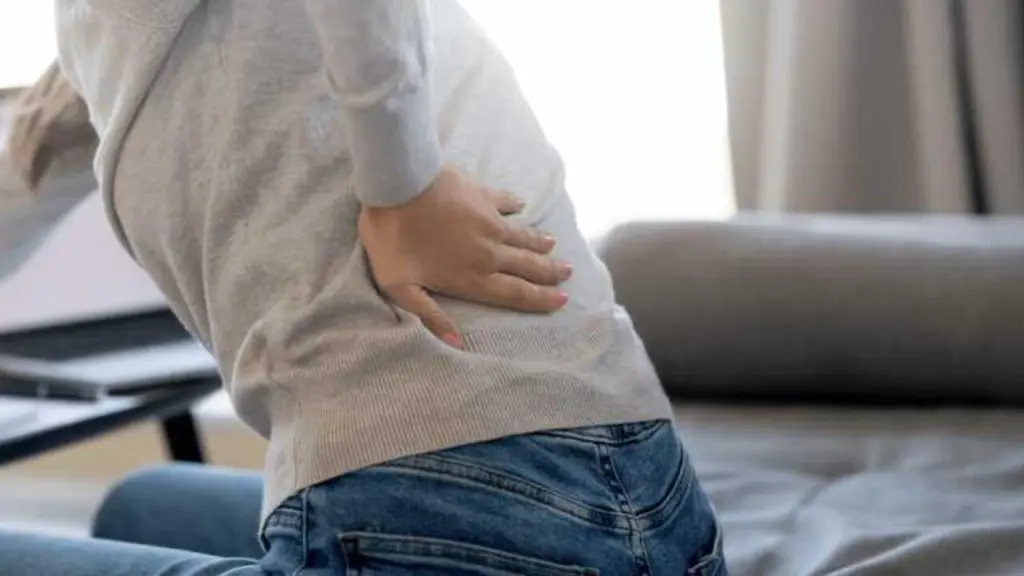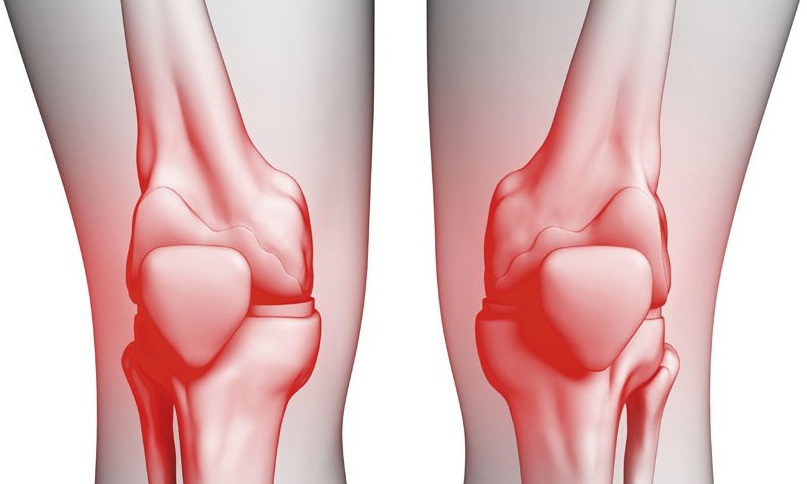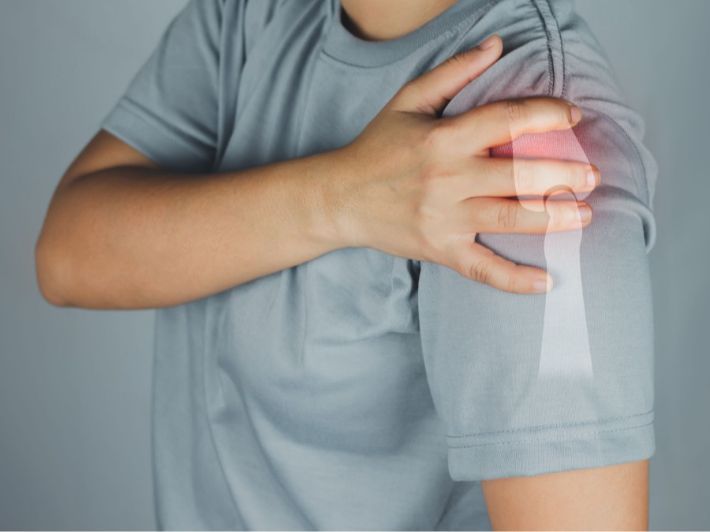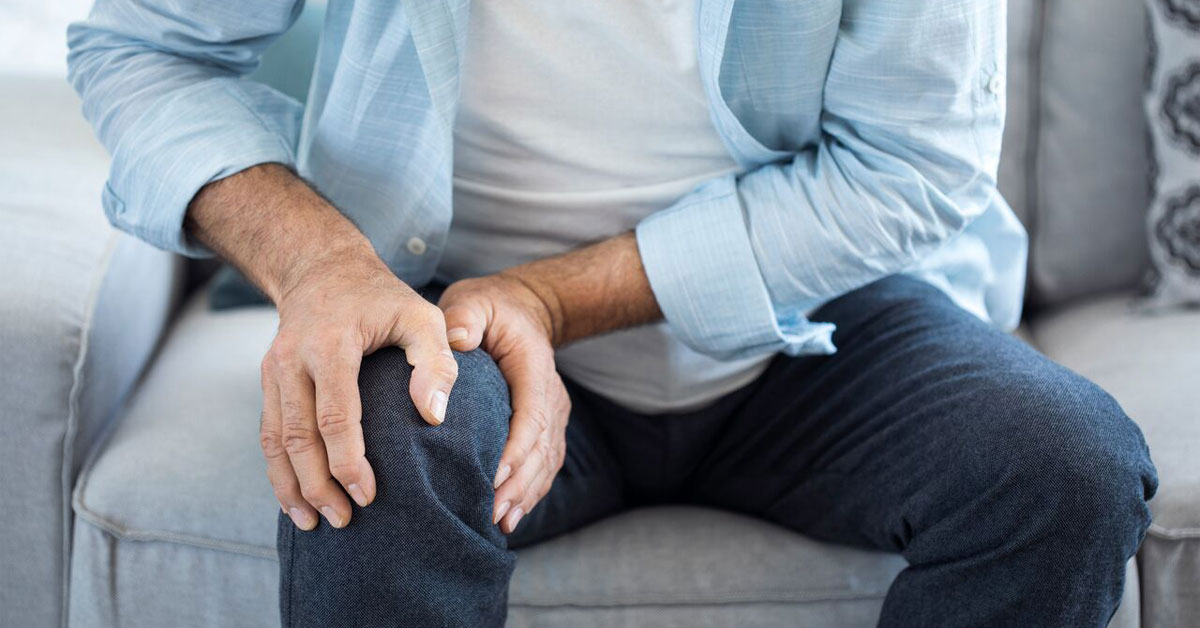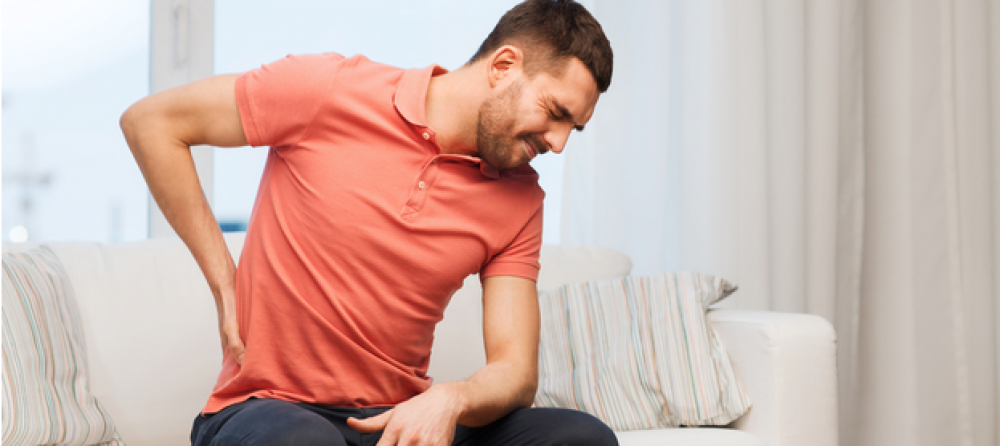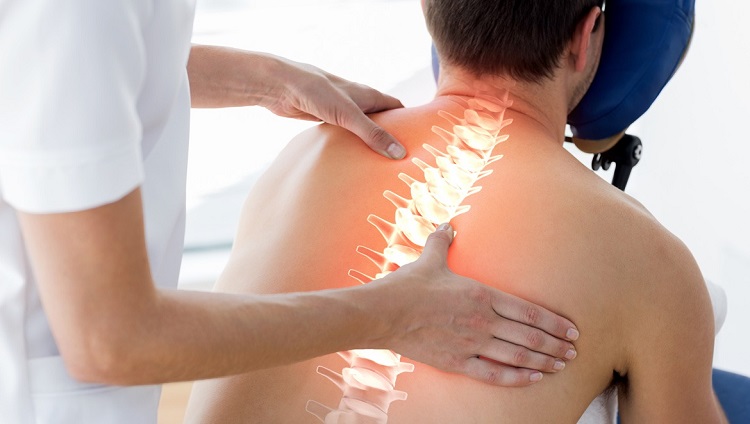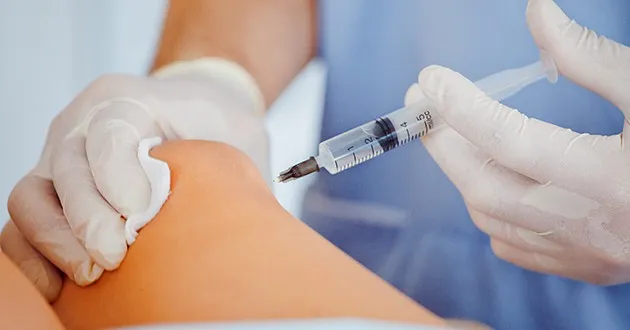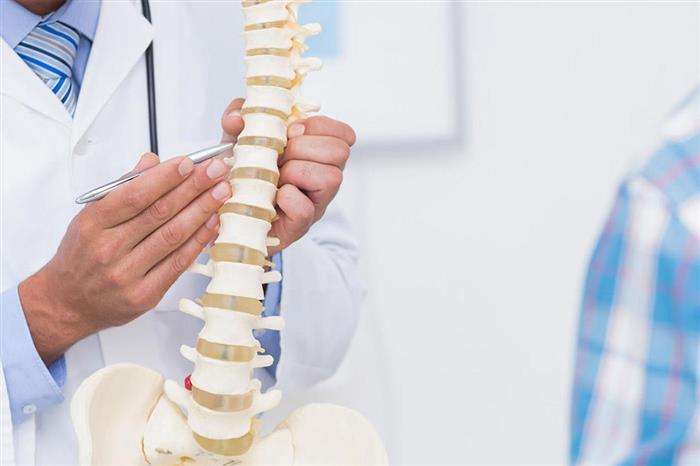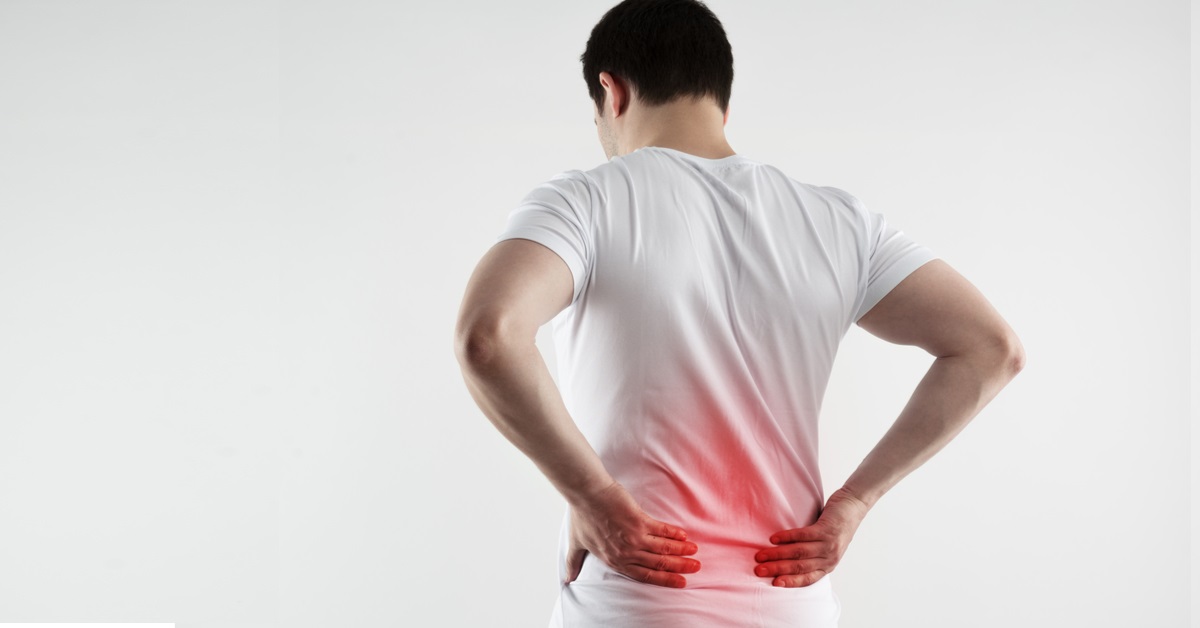What are the signs of recovery from disc herniation? And what is the diet for promoting disc health?
Signs of recovery from disc herniation
If you have experienced a disc herniation and have followed a treatment program, it is important to know the signs of recovery that may appear during the treatment period. These signs indicate the success of the treatment plan in relieving pain and improving your condition. In this article, we will highlight some common signs of recovery from disc herniation.
Pain relief: One of the most prominent signs of recovery from disc herniation is pain relief. Typically, individuals with disc herniation experience sharp and continuous pain in the back or neck area. With a good response to the treatment plan, the level of pain improves, becomes less severe, and less frequent.
Restoration of mobility: A common issue for those suffering from disc herniation is the loss of their ability to perform daily movements naturally. As the healing process progresses, patients notice an increase in mobility and the ability to engage in various activities.
Improvement in daily life activities: Recovering the ability to perform routine activities in patients’ lives is one of the most important signs of their recovery from disc herniation. Typically, patients struggle to perform household tasks, move, and sit for extended periods. As their condition improves, they find that they can move more comfortably and effectively.
Disappearance of spasms and muscle tension: Injuries caused by herniated discs often come with muscle spasms and contractions in the back and legs. As the healing process begins, gradual disappearance of these spasms and contractions becomes apparent.
Mood improvement: Individuals with disc herniation often experience a decrease in their mood and an increase in psychological stress due to chronic pain. With a good response to treatment, they notice an improvement in their mood and a reduction in stress levels.
Increase in strength and stability: As the treatment period continues, individuals with disc herniation notice a gradual increase in the strength and stability of their muscles. This facilitates their ability to control their movements and slow the progression of herniated disc symptoms.
If you have two or more of these signs, it indicates the success of the treatment and recovery from disc herniation. However, it is important to continue following the health instructions and advice from your healthcare team to ensure complete and permanent recovery.
When Does Disc Herniation Heal?
When a person experiences disc herniation in the back or neck, the first question that comes to mind is when they will fully recover from this condition. Unfortunately, there is no definitive answer to this question, as the time it takes to recover from disc herniation varies from case to case due to several factors. In this article, we will take a look at the average duration of recovery and a set of tips for a faster recovery.
- Average Recovery Period: Typically, recovery from disc herniation takes about 4-6 weeks. During this period, the affected discs heal, and swelling and pain gradually decrease. However, it should be noted that this is an average period, and it may vary depending on each individual’s condition and the severity of the injury.
- Appropriate Treatment: It is essential to follow the appropriate treatment to expedite the recovery process from disc herniation. Treatment may include taking pain-relieving medications, applying cold/hot therapy, and undergoing physical therapy sessions. It is also recommended to get adequate rest for the back and avoid activities that may aggravate the discs.
- Gradual Improvement: During the recovery period, it is advisable to take your time when resuming your activities. Gradually increase your regular activities without straining your back. You may need to consult your specialist to establish the optimal improvement plan based on your condition.
- Avoid Rapid Movements: As much as possible, avoid movements that require sudden elevation and rapid descent, such as bending, sitting, and standing, as they can increase pressure on the discs and affect the recovery process.
- Build Back Muscle Strength: Strengthening the back muscles can be beneficial in preventing new disc herniation and expediting the recovery process. It is recommended to perform rehabilitation exercises recommended by your specialist.
- Maintain Good Posture: Maintain proper posture for the alignment of the back while sitting and walking, even during the recovery period. Use specially designed cushions to support the lower back area if necessary.
- Regular Medical Consultation: Do not ignore any unusual symptoms that may appear during the recovery period. Consult your doctor if there are any changes in symptoms or if there has been no improvement after a reasonable period of time.
In the end, it is essential to consult your specialist and adhere to the prescribed treatment after diagnosing the disc herniation. Only then can the duration of recovery in your specific case be determined.
What Should a Disc Herniation Patient Avoid?
Disc herniation is a common back condition that causes chronic pain and reduces the quality of life. Despite the importance of various treatments, there are some things that patients should avoid to maintain their health. In this article, we will provide you with a list of the most important considerations for a disc herniation patient.
Avoiding Incorrect Sitting Posture: The patient should maintain proper posture while sitting, even if using an inappropriate seat. One should not bend forward as much as possible, especially if there is disc herniation in the back region. It is essential not to sit for extended periods without moving, as it can cause severe back pain. Avoiding Heavy Loads: It is advisable not to carry or lift heavy objects to avoid increasing pressure on the discs and vertebrae. If it is necessary to lift something heavy, proper lifting techniques should be used to prevent further injury and pain.
Avoid Exercises that Strain the Back: Patients are advised to avoid certain exercises that may engage the abdominal muscles and cause strain in the lower back area. This includes exercises like aquatic exercises and swinging on a treadmill. Avoid Intense Activities for Prolonged Periods: It is recommended not to strain the patient’s body with intense activities for long periods of time. The patient should maintain balance and moderation in daily activities and avoid excessive stress. Avoid Bending and Twisting: It is preferable for the patient not to bend or twist excessively, especially if there is disc herniation in the spinal column. Compliance with these guidelines helps alleviate pain and improve the patient’s condition. Avoid Smoking: Smoking is a significant factor that increases the chances of developing back problems, including spinal disc disorders and exacerbating disc herniation issues. It is essential for the patient to avoid smoking and adhere to a healthy lifestyle.
By following these tips and staying away from harmful practices, a disc herniation patient can improve their health and alleviate their pain. The patient should consult a doctor for personalized guidance before taking any action or engaging in physical activity.
Does Rest Help Treat Disc Herniation?
Disc herniation is one of the most common issues affecting individuals in the back region, involving the movement of a disc that serves to guide and protect the spinal column due to tension or inflammation resulting from specific conditions. Of course, consulting a specialist doctor is necessary to diagnose the condition and determine the best treatment plan.
But does rest help in treating disc herniation? We will clarify this in this article.
- Shorten the Rest Period: Some individuals may believe that taking complete rest for extended periods will contribute to the recovery of disc herniation, but this is not accurate. Certainly, rest helps alleviate pain and reduce irritation, but the rest period should be limited. After resting for a couple of days, the patient is advised to begin engaging in some light activities and walking. This is to avoid body stiffness and strengthen the back muscles.
- Use a Suitable Mattress: Using a high-density, well-ventilated mattress is one of the most crucial things that patients with disc herniation should consider. Weak wooden boards may be placed under the mattress to increase its firmness. Take Pain Relief Medications: Some orthopedic doctors may prescribe pain relief medications and tension reduction in the herniated area to patients. It is essential to follow your treating physician’s instructions and not exceed the prescribed doses.
- Back Support Belt: In some cases, a back support belt may play a supportive role in treating disc herniation. However, it is advisable to consult an exercise and protection expert to choose the appropriate belt and apply it correctly.
- Surgery as a Last Resort: Surgical intervention should not be the first choice for treating disc herniation cases. If the symptoms persist or worsen despite following the described instructions, or if there is atrophy or weakness in leg movement, surgical intervention may have a role in removing the disc herniation obstacle.
In conclusion, according to consultation with a joint and bone health expert, rest can help in treating disc herniation, but it should be limited in duration, followed by light exercises, and adherence to the prescribed instructions.
How Does a Disc Herniation Patient Sleep?
Disc herniation is a common issue that many individuals suffer from. To alleviate their pain and improve their sleep quality, disc herniation patients need to adopt proper sleeping techniques. Here are some guidelines on how disc herniation patients should sleep:
Sleep on Your Back with a Pillow: For individuals with disc herniation, the best sleeping position is lying on their back. This position may help alleviate pressure on bulges or herniations in the spinal discs. It is recommended to place a small pillow under your head to support your neck and maintain the alignment of your spine.
Fetal Position: Another effective sleeping position for disc herniation patients is the fetal position. This involves sleeping on your side with your knees pulled toward your chest. This position may help reduce pressure on the back area and alleviate constant strain on the spinal discs.
Maintain Body Support: If adapting to lying on your back or the fetal position is challenging for you, you can try securely bracing your body. Placing your back firmly against the back of a chair with your hands in the lap can help relieve lower back pain. It is also preferable to have a small pillow between your back and the chair’s arch to increase comfort while bracing.
Change Sleeping Positions: You may benefit from changing your sleeping position, so you don’t stay in one position for an extended period. You can try sleeping on the other side or on your stomach if it’s comfortable for you. The key is to avoid exerting any extra pressure on the spinal discs.
Select the Right Mattress: Choosing an appropriate mattress is crucial for disc herniation patients. It’s recommended to use a mattress with good back and spine support, which helps distribute weight evenly and reduce pressure on tight areas.
Tension Relievers: Some patients use tension relievers such as cooling pillows or cooling mats to provide immediate relief for back pain. It is advisable to consult a doctor or pharmacist to choose the right type of tension reliever suitable for you.
Don’t forget that consulting a specialist physician is essential when adopting any methods to relieve disc herniation pain. Doctors can provide personalized advice and conduct tests to diagnose and treat potential threats to the back and surfaces.
Does Herniated Disc Pain Ever Go Away?
Does the pain go away in the case of a herniated disc? This may be a common question for many people dealing with this issue. However, before we explore this question, let’s understand the concept of a herniated disc.
A herniated disc is a condition that affects the discs of the spine, which are the cushions located between its vertebrae. The spinal disc consists of a tough outer ring and a soft, jelly-like center, and injury or herniation of it can lead to varying degrees of neurological symptoms.
Herniated discs can have negative effects on the quality of life of those affected, such as back and limb pain, numbness, or weakness in certain muscle groups. But can the pain ever completely go away in the case of a herniated disc?
Patients with herniated discs should be aware that it’s unlikely for the pain to completely and permanently disappear in this condition. However, quieting or reducing the severity of symptoms is possible through various methods.
If you are suffering from a herniated disc, it’s important to manage this condition properly. While there may not be a complete cure for this condition, there are treatment options available to alleviate pain and reduce accompanying symptoms. Consult with your treating physician to evaluate your condition and prescribe the appropriate treatment for you.
What Is Cartilage Nutrition?
Cartilage is an essential component of the body and forms the core part of many joints. To maintain joint health and support cartilage, having a healthy and balanced diet plays a crucial role. Here is a list of some foods that can help build and nourish cartilage:
- Foods Rich in Protein: Protein is an essential component for tissue building, from nails to cartilage. Some ideal sources of protein include legumes like soybeans and beans, poultry, beef, and fish.
- Vitamin C-Rich Foods: Vitamin C is important for increasing the secretion of cartilage collagen, which enhances joint health. Some vitamin C-rich foods include oranges, strawberries, broccoli, and red peppers.
- Omega-3 Fatty Acid Foods: Omega-3 fatty acids can help reduce inflammation-related swelling and support joint health. Fish oil is a rich source of these acids, as are some seeds like flaxseeds and chia seeds.
- Nuts: Nuts are a good source of both fatty acids and protein, such as coconut, walnuts, and almonds. As natural sources of lubrication, taking these nuts as snacks can nourish the cartilage.
- Dark Leafy Vegetables: Dark-colored vegetables like spinach, kale, and broccoli contain antioxidants that promote joint health and strengthen cartilage.
- Anti-Inflammatory Spices: Using spices like ginger, turmeric, and cinnamon in cooking is effective in reducing joint inflammation and their impact on joint health.
If you are experiencing joint problems or want to strengthen your cartilage health, adding these foods to your diet regularly may be beneficial. It is important to consider consulting a nutrition specialist before making any new dietary changes.
Can Cartilage Regenerate Itself?
Can cartilage regenerate itself? Recent research has led to fascinating discoveries about the cartilage’s ability for self-renewal. Here is a list of four points that explain these remarkable findings:
Duke University Discovery: Contrary to common belief, a study conducted at Duke University in the United States revealed that joint cartilage can repair itself through a remarkably self-renewing process. Researchers found that, unlike previous notions, cartilage can naturally repair itself without the need for surgeries. Key Regenerative Capability: It turns out that humans have the ability to regrow cartilage in joints, much like their ability to heal from other wounds and injuries. Based on this study, humans can also have the capacity to rebuild lost cartilage in their joints.
Possibility of Improvement: Although research is still in its early stages, the Duke University discovery opens up the possibility of humans having a natural means of renewing damaged cartilage. If we can understand the molecules that differ between humans and frogs, we may be able to develop ways to enhance our ability to repair cartilage and return it to its previous state. Importance of Treatment and Prevention: Of course, the healing and rebuilding of cartilage depend on the degree and nature of the injury. It is important to consult with your specialist doctor to assess the injury and determine the appropriate treatment. In addition, maintaining a healthy lifestyle and weight is essential to reduce the negative effects on cartilage and prevent future problems.
The spread of this fascinating information may contribute to the development of new ways to treat cartilage problems in the future. Although these experiments may take time, patients can hope to return to their normal lives without the need for corrective surgeries. With the use of technology and innovation, cartilage can return to its previous state, encouraging exploration of this possibility in the future.
Is Cupping Beneficial for Treating Disc Herniation?
Cupping therapy is one of the traditional treatments used by people for various health issues. Among these problems, some individuals may face disc herniation in the lumbar region. However, there are questions about the effectiveness of cupping therapy in treating this problem.
In this article, we will present what some research and reliable sources say about the benefits of cupping therapy in treating disc herniation. Here is some information that may be helpful:
Improving Blood Circulation: Some research suggests that cupping therapy may contribute to increasing blood circulation in the area of disc herniation, which may lead to relieving spasms and nourishing compressed nerves. Consequently, this may help reduce pain and improve the patient’s condition. Stimulating the Body to Produce Cortisol: Some cupping therapy proponents claim that it stimulates the body to naturally produce cortisol, a hormone with anti-inflammatory properties that may help alleviate pain. Enhancing Blood Flow: It is promoted that cupping therapy may enhance blood flow in the area of disc herniation, potentially leading to the transfer of natural pain relievers (such as endorphins) and removal of inflammatory substances. This could reduce the pain associated with disc herniation.
In addition, cupping massage technique may be used on the affected area to stimulate blood flow and relieve tension. It is recommended to undergo regular cupping sessions in conjunction with a physical therapy program that includes exercises and massages to enhance their potential impact on treating disc herniation.
However, it is important to note that this information is based on some research and personal opinions, and there is no conclusive scientific confirmation regarding the effectiveness of cupping therapy in treating disc herniation. Therefore, before making any decisions, it is advisable to consult with a specialized doctor for personalized advice based on the patient’s condition.
Does Disc Herniation Affect the Feet?
When it comes to disc herniation, a person experiences the protrusion of a part of the intervertebral disc between the spinal vertebrae. Although this effect often occurs in the back and lower back area, it can also directly or indirectly affect the feet.
One potential impact of disc herniation on the feet is numbness. The affected person may feel tingling in their foot or numbness in their toes due to the compression of nerve roots that cause pain and herniation at the water level through swelling.
Additionally, atrophy and swelling may occur in the foot area due to the impact of disc herniation on the surrounding circulation. The size of the foot may become larger than normal, and pain may intensify significantly.
If you have a disc herniation in the spinal column, you may feel its impact on your feet. This effect can lead to problems such as numbness, foot swelling, and increased size, as well as severe pain. Therefore, proper prevention and treatment for this issue are necessary. Consult your doctor to determine the best treatment plan that suits your condition.
Does Disc Herniation Affect Nerves?
Yes, disc herniation can affect nerves. When the cervical disc herniates in the spinal column and compresses the nerves surrounding the spinal cord, it can cause acute or chronic pain and affect nerve function. This pressure can lead to symptoms such as back and leg pain, numbness, tingling in the extremities, muscle weakness, and loss of motor control. It is important to consult a doctor if you have symptoms similar to disc herniation for evaluation and appropriate treatment.
What Are the Exercises for Disc Herniation?
Spinal Extension Exercises: Spinal extension exercises are suitable for individuals with disc herniation as they help relax tense muscles and alleviate pain. It is recommended to perform these exercises under the supervision of a physical therapist to ensure safe and effective movement.
Aquatic Exercises: Water exercises provide significant benefits for individuals with disc herniation. The use of water resistance contributes to stretching and strengthening muscles while reducing herniation pain. Swimming is advised, done slowly, and under the supervision of a physical therapist to avoid further injuries or worsening of the condition.
Back Massage: Back massage is an effective method for relieving disc herniation pain. Soothing essential oils like lavender oil can be used to enhance the benefits of massage and relax tense muscles.
Yoga Exercises: Certain yoga exercises are suitable for individuals with disc herniation as they improve flexibility and strengthen the lower and back muscles. Practicing these exercises under the guidance of a specialist ensures maximum benefit and prevents any additional injuries.
Rehabilitation Exercises: Rehabilitation exercises include strengthening the abdominal and back muscles to improve spinal stability and maintain flexibility. It is recommended to perform these exercises as part of specialized physical therapy programs designed for individuals with disc herniation.
Walking: Walking is one of the simplest exercises that individuals with disc herniation can perform. It improves blood circulation, strengthens the lower and back muscles, and does not put excessive pressure on the spine when walking on flat surfaces.
It is important not to forget the significance of consulting a doctor before starting any exercises to ensure the comprehensive treatment of disc herniation and avoid potential complications.
Is Ice Beneficial for Disc Herniation?
History of Use in Injury Treatment: The use of ice in injury treatment dates back to a long period in history. Ice has been used for centuries as a common method to treat pain and inflammation and was generally employed in injury treatment to alleviate pain.
Improved Blood Flow: Ice is considered one of the methods to strengthen blood flow by constricting blood vessels. This contributes to reducing swelling and inflammation associated with disc herniation, as it helps alleviate pressure on the blood vessels and tissues.
Temporary Numbing: Before surgery for treating disc herniation, your doctor may use localized cooling with ice packs to numb the affected area, which can significantly reduce temporary pain.
Reducing Swelling and Edema: Ice is effective in reducing swelling and edema resulting from disc herniation. Coldness affects blood vessels and causes them to narrow, reducing the blood flow to the area and, consequently, reducing the size of swelling and expediting its disappearance.
Specific Usage Periods: It is preferred to use ice within 24 hours of experiencing disc herniation or a lower back injury. Generally, it is recommended to use ice packs for 20 minutes with intervals of no more than an hour between uses.
Medical Consultation: Before applying any treatment methods, it is essential to consult a doctor or a specialist. There may be specific recommendations regarding the use of ice in the treatment of disc herniation and related matters.
